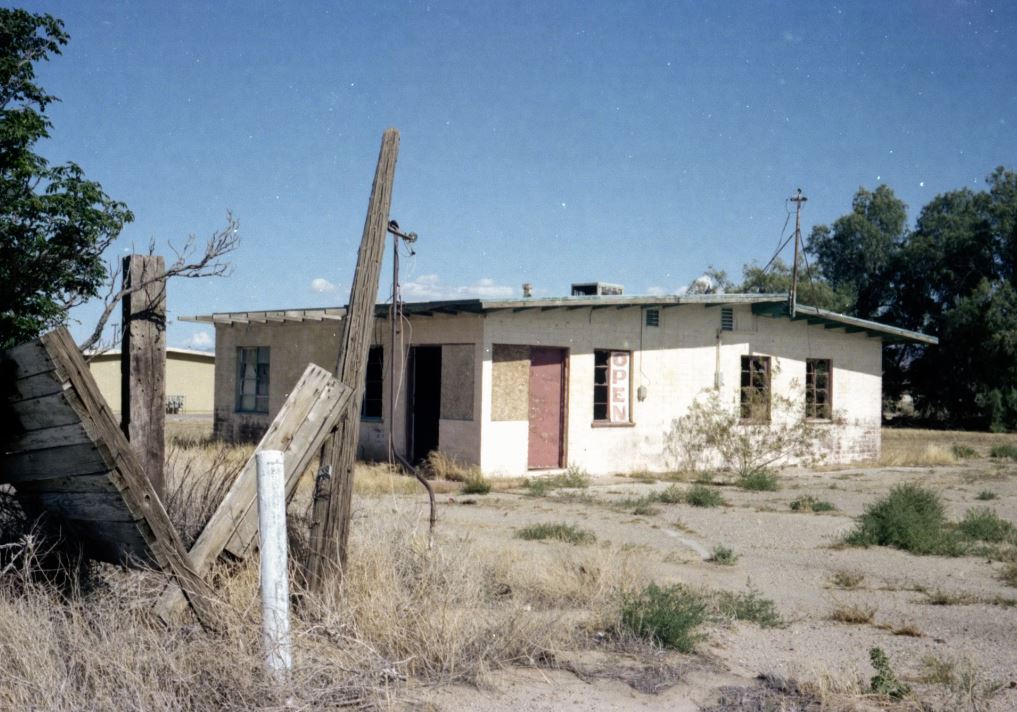Losing your home to foreclosure can be really tough.
It's not just about potentially losing your place to live – it also messes up your credit score and can make it hard to get loans in the future.
A lot of times, people end up in this situation because they don't know their options.
Here's the thing – banks and lenders don't actually want to foreclose on your home.
The process takes a lot of time and money, and nobody wins in the end!
In this post, I’ll break down 10 ways you can try to avoid foreclosure.
#1 Consider A Repayment Plan
If you're having trouble with your mortgage payments, don't wait – talk to your lender right away. Many of them are willing to work with you on a plan to catch up on your missed payments.
These plans usually last anywhere from three to nine months.
Keep in mind, though, you'll need to keep up with your regular payments while you're catching up on the missed ones.

Also Read: Selling A House In Preforeclosure
So make sure you can handle both before you agree to anything.
This option works well if you're just going through a temporary rough patch with your finances.
#2 Reinstate The Loan
If you're facing a foreclosure, it's possible to opt for this option and get your loan back.
In most states, there's a certain time period where you can reinstate your loan by catching up on missed payments. Ask your lender about this option.
Usually, lenders prefer this to foreclosure because foreclosure is expensive for them too.
If they don't offer you a new loan for the missed payments and interest, you'll probably need to pay everything you owe – including late fees and penalties – within about 30 days.
But remember, this only works if your property hasn't been sold yet.
Once the auction starts, you can't reinstate the loan anymore.
How to Reinstate the Loan
- Get in touch with your lender or mortgage company and ask for the total amount you owe.
- Pay all the missed payments to reinstate your loan.
- Make sure you pay the full amount – your house is on the line here.
- Check with the lender's attorney or foreclosure trustee to make sure your reinstatement went through.
- Keep in mind that reinstating doesn't mean you can skip future payments. You need to stay on top of your upcoming payments to keep things running smoothly.
- Be prepared to pay extra fees related to the foreclosure process, including attorney fees.
The best time to reinstate your loan and stop the foreclosure is as soon as possible after you've realized that you're going to miss a payment.
If the foreclosure has already gone to court, you might still have a chance, but you'll need to act fast.
#3 Try To Get A Loan Modification
A loan modification is when you and your lender agree to change the terms of your loan.
This can help prevent foreclosure by lowering your monthly payments or extending the time you have to pay off the loan.
Lenders might lower your interest rate to make payments easier, or they might add your missed payments to your loan balance.
Sometimes, they'll convert your unpaid balance into something called a principal forbearance, which you pay as a lump sum at the end of your loan term.
How Loan Modification Works
Getting a loan modification takes time – we're talking weeks or even months.
Here's what usually happens:
- Lenders look at a few key things when deciding whether to offer a modification.
- They're more likely to help if the home you're paying for is where you actually live.
- They'll want to make sure your financial hardship is real and not made up.
- Most importantly, they need to see that you can actually afford the new, modified loan terms.
- To start the process, reach out to your lender and explain why you can't keep up with your current payments.
- Your lender will ask for some paperwork and documents to review your situation.
If you get approved, your loan will be modified to terms that work better for your current financial situation.
#4 Make A Forbearance Agreement
With a forbearance agreement, you can convince your lender to let you pay less (or sometimes nothing at all) for a while.
This usually lasts up to six months, after which you go back to your normal payments.
Sometimes, you can get a longer forbearance, but it depends on how flexible your lender is willing to be.
Lenders usually see forbearance as a last resort – it's for when you really can't make any payments or you're barely scraping by, but have a positive outlook for re-employment in the near future.
Also Read: Can I Sell My House While In Foreclosure?
You're more likely to get a forbearance if you can convince your lender that your money troubles are temporary and that you'll be able to get back on track after the forbearance period.
What Happens After Forbearance
When your forbearance ends, you'll start making your regular monthly payments again. For the payments you missed during forbearance, you have a few options:
- Pay them along with your regular monthly payments
- Set up a separate repayment plan to catch up
- Add them to your loan balance
- Sometimes, the lender might let you wait until the end of your loan to deal with those missed payments
Getting a forbearance can give you some breathing room to sort out your finances and figure out how to keep up with your payments in the long run.
#5 File For Bankruptcy
If you feel like there's no way you can keep up with your mortgage payments, filing for Chapter 13 Bankruptcy might be an option.
This can stop the foreclosure process and let you keep your home while you're going through bankruptcy.
But this should really be a last resort.
Filing for Chapter 7 Bankruptcy probably won't help if you're trying to keep your home, because in Chapter 7, your assets (including your home) might be sold to pay off your debts.
Chapter 7 might buy you a couple of months of relief until the lender gets permission from the court to proceed with foreclosure.
Also Read: Selling your house during bankruptcy
Generally, it's not the best idea to file for bankruptcy just to save your house. But if you have other debts you're struggling with too, bankruptcy might help with those.
It's a good idea to talk to a lawyer about this option and really understand what you'd be getting into.
#6 Try To Refinance
Refinancing is like starting your mortgage loan over from the beginning. Every state has laws that let you do this, and in most states, you can refinance right up until the foreclosure sale happens.
Some states even let you get your home back after it's been sold.
If you have bad credit or a pending foreclosure, it might be hard to get a regular refinance. In that case, you might need to look into other options.
If regular lenders turn you down, you could try getting a hard money loan from a private lender.
These loans usually have high interest rates, but they might buy you some time to get back on your feet financially and save your house.
#7 Make A Short Sale
A short sale is when your lender agrees to let you sell your house for less than what you owe on your mortgage. This can help you avoid foreclosure, but you need to be careful.
In some states, the lender can still come after you for the difference between what you owed and what the house sold for.
To protect yourself, ask your lender to give you something in writing saying they won't do this.
Even if your lender forgives the remaining balance, you might have to pay taxes on that forgiven amount, so keep that in mind.
#8 Give Up The House By Deed In Lieu
Giving up your house is never easy, but sometimes it's the best option. If you have to do it, you want to do it in a way that benefits you as much as possible.
One way to do this is through a "deed in lieu of foreclosure."
This means you sign an agreement with your lender to give them your house instead of going through foreclosure.
But before you do this, make sure you get it in writing that they'll forgive any remaining balance on your loan.
Keep in mind that you might have to pay taxes on any forgiven debt.
Also, this option usually doesn't work if you have more than one mortgage on your home.
#9 Accessing Federally Backed Mortgages
If your house is on the verge of foreclosure, your lender might offer you several options to help you avoid it.
One possibility is to have your loan insured by a government-controlled mortgage like the Federal Housing Administration, Rural Housing Service, or the Veterans Administration.
However, it's important to know which entity is insuring or guaranteeing your loan throughout this process. This can affect what legal steps you might need to take.
To find the best federally backed mortgage for your situation, it's a good idea to talk to a HUD-approved housing counselor.
They can help you understand all your options.
#10 Reverse Mortgage
If you're 62 or older, you might be able to use a reverse mortgage to save your home.

But this only works if you have enough equity in your home – meaning the value of your home needs to be more than or at least equal to what you owe on your mortgage.
Reverse mortgages can be helpful for older folks who are living on fixed incomes, because foreclosure can be especially devastating for them.
A reverse mortgage lets you keep owning your home, but it's not always the best choice.
You need to have enough equity in your home to qualify, and there are additional costs for things like insurance and taxes.
Also Read: How Health Issues Lead To Foreclosure
Plus, you'll be using up most of the equity you've built in your home.
How Reverse Mortgages Work
A reverse mortgage is different from a regular mortgage. Instead of you paying the lender, the lender pays you, using your house as security.
You're essentially taking out a new loan to pay off your old one, which can stop a foreclosure.
Over time, the amount you owe on a reverse mortgage grows.
Usually, it's paid off either by selling your house or, in many cases, after the homeowner passes away and the house is sold.
A reverse mortgage can be a good way to solve your immediate problem of potentially losing your home. It replaces your original mortgage and puts off having to sell your house.
What To Do If You Can’t Avoid Foreclosure?
If foreclosure seems inevitable, selling your home is your best move.
If you have time, you can list in the open market with a real estate agent and sell it the traditional way. But if you are running out of time, selling to a cash buyer is a good option.
With a cash sale, you can quickly settle your mortgage, stop the foreclosure process, and walk away with some cash in hand.
Here are some of the biggest pros of selling to a cash buyer like us:
- Close the deal fast, often within days.
- Sell your home as-is, no need to fix anything.
- Save on real estate agent commissions and closing costs
The only downside is that you might get a lower offer.
But it’s a faster, more certain option that can help you regain control and move forward without the weight of foreclosure on your shoulders.
If you want to know about cash buyers, check Sell Your Property Fast out. We can help you avoid the damaging effects of foreclosure on your credit and financial future.
Final Thoughts
When you're already struggling financially, the last thing you want is to lose money to companies that promise to help but don't deliver.
Be wary of businesses that claim they can quickly solve your foreclosure problems.
All they do is empty your pockets without providing any guarantee of saving your home from foreclosure or charge you an upfront fee and maybe help you apply for an entirely free government program.
Your best bet is to work with a HUD-approved housing counselor or directly with your lender.
They provide these services for free, and their information is more reliable.
Remember, there are options out there – don't give up hope!

